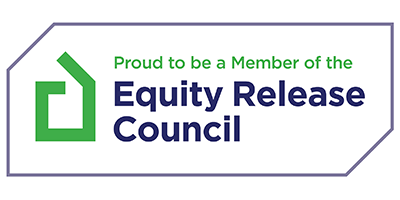In this article
Investing in property can be a great way to generate extra income later in life, and many retirees explore buy-to-let mortgages as a way to do just that.
While some lenders may have specific criteria for older applicants, there are plenty of options for both experienced landlords and those investing for the first time.
Understanding how these mortgages work, what kind of deposit might be needed, and the different ways to fund a purchase can help when considering your next steps.
What Do Lenders Look for in Older Buy to Let Investors?
Every lender has their own approach when it comes to buy-to-let mortgages, and while some set age limits, others focus more on financial stability and investment potential.
A key factor is whether the property can support itself financially, as buy-to-let mortgages are primarily assessed on rental income rather than personal earnings.
Most lenders require the expected rental income to exceed mortgage payments by a certain margin, ensuring that the investment remains profitable.
Some will also consider additional assets, particularly if rental income alone does not meet their criteria.
If you already own other properties, this could work in your favour, as some lenders prefer applicants with prior landlord experience.
How Much Deposit Will I Need?
Buy-to-let mortgages typically require a 25% deposit, though the exact amount depends on the lender and type of property.
Having a larger deposit may sometimes open up access to better interest rates, but this varies between lenders.
If you already own a home, equity release could provide a way to fund a buy-to-let purchase. In some cases, it may be possible to buy a property outright, meaning a deposit would not be required.
However, if the amount released does not cover the full purchase price, a deposit may still be needed.
As with any financial commitment, it is important to weigh up the long-term impact, as releasing a large sum of equity can affect future plans and reduce the value of any inheritance.
What If I Need Fast Access to Funds?
Some investors prefer to move quickly, particularly if they have found a property at a good price or need to complete a purchase in a short timeframe.
In these situations, a bridging loan could be an option. These short-term loans are designed to provide fast access to funds, allowing investors to secure a property before arranging a longer-term mortgage.
Bridging loans are often used as a stepping stone, with many borrowers later refinancing onto a buy-to-let mortgage.
They can be particularly useful when purchasing properties that need renovation, as some standard mortgage lenders require the property to be in a habitable condition before they will approve a loan.
Is It Possible to Get a Buy to Let Mortgage as a First-Time Investor?
Many lenders prefer applicants who already own property, but there are options for those investing in buy-to-let for the first time.
Some lenders may have different criteria for first-time landlords, such as requiring a strong financial profile or a higher deposit.
Others may offer specific mortgage products tailored to those stepping into property investment for the first time.
If you are new to buy-to-let, it can help to understand what lenders are looking for and how to approach the process.
What Happens in the Future? Thinking About Your Exit Strategy
Planning ahead is just as important as securing the mortgage itself. Some investors intend to keep their rental property long-term for steady income, while others plan to sell at a later stage.
If the property was originally purchased using a bridging loan, refinancing onto a buy-to-let mortgage could provide a more stable, long-term repayment structure.
For those looking at the bigger picture, buy-to-let can also be part of a wider financial plan.
Some landlords pass properties on to family, while others use rental income as a way to supplement their lifestyle in retirement.
Whatever the plan, considering your options early can help make sure your investment works for you in the years to come.
Finding the Right Mortgage for Your Investment
Buy-to-let mortgages are available from a wide range of lenders, each with their own approach to age, experience, and affordability.
Some providers offer more flexibility, taking a broader view of financial position and investment goals rather than setting strict limits based on age.
If you are looking at investing in property during retirement, speaking to a mortgage broker can help you explore the options available.
UK Moneyman has helped many investors secure the right mortgage, whether they are expanding a portfolio or stepping into the buy-to-let market for the first time.








